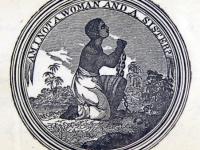How's your preparation for the coming month’s lesson plans? As you know, February is Black History Month; this article will provide you with HSP lesson plans, primary sources and other resources to augment your February curriculum. Additionally, take a look at HSP’s January 2014 publication of The Pennsylvania Magazine of History and Biography, to read book reviews, documents and articles, including “The Art of Racial Politics: The Work of Robert Douglass Jr., 1833-46”.
The archives at HSP have both hidden and overt treasures supplying educators and researchers with records that tell of black culture. For instance, read this blog from 2009 to access the story and documents about Billy Brown. Visit the subject guide to navigate HSP’s African American Collections, which entails content from the 1740s to the present.
HSP's unit plan called Civil Rights Meeting Flyers allows students to examine primary sources written by black social activists themselves, helping to fill in a historical picture given by newspaper articles, advertisements, paintings and other documents concerning the black population. Another unit plan to take advantage of, The Pennsylvania Abolition Society and the Free Black Community includes lesson plans entailing student examination of advertisements depicting African Americans, case stories and statistics of the free black community in the 18th and 19th century, and educational primary sources.
Speaking of educational sources, please refer to this Pennsylvania Legacies publication entitled Pennsylvania, African Americans, and Civil Rights for interesting and helpful background reading that can help you make a difference in your classroom this February. Take advantage of our online digital library to find primary sources that can augment your own curriculum plans. For instance, an interesting literary allusion to Uncle Tom’s Cabin, comes in the form of a company advertisement. The ad highlights the emotional effect of the book, which propelled the abolition of slavery, in order to describe the company’s approach to customer service: tying an emotion to its idea or service.
Below are some more items to get you started with browsing through our archival records online. Here’s an ad that reflects the historical assumption of status and role based on race. Historical drawings and images of black soldiers illustrate African American presence and involvement in the Civil War. This cartoon depicts certain aspects of the civil war and negative stereotypes of the “Black Draft”. And this one is the seal of the Philadelphia Female Anti-Slavery Society, a powerful symbol that evokes a sense of relationship that calls for equality.

